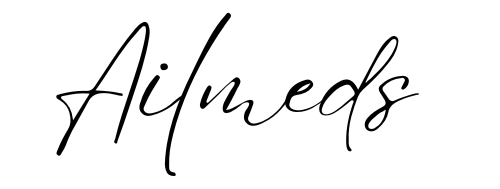Elbow Pain

Elbow pain can arise from various causes, such as tendinitis (e.g., tennis elbow or golfer’s elbow), sprains, strains, or arthritis. Depending on the cause and severity of the pain, several over-the-counter (OTC) treatment options might help provide relief:
1. Nonsteroidal Anti-inflammatory Drugs (NSAIDs): These can help reduce inflammation and pain.
Ibuprofen (e.g., Advil, Motrin IB)
Naproxen (e.g., Aleve)
2. Acetaminophen: This can help relieve pain but doesn’t have the anti-inflammatory properties of NSAIDs.
Acetaminophen (e.g., Tylenol)
3. Topical Analgesics: These are applied directly to the skin over the painful area.
Counterirritants (e.g., Icy Hot, Bengay): Products that contain menthol or camphor produce a warming or cooling sensation that can distract from the pain.
Topical NSAIDs (e.g., Voltaren Gel)
Capsaicin cream: Derived from chili peppers, this cream can help reduce pain from conditions like osteoarthritis.
Lidocaine patches or creams: Provide a numbing effect to the applied area.
4. Supportive Devices:
Elbow braces or straps: These can help reduce strain on the tendons and muscles of the elbow, especially for conditions like tennis elbow.
5. Cold Packs: Applying cold packs can reduce inflammation and numb the area, especially after acute injuries or flare-ups. Ensure you have a cloth or towel between the cold pack and skin to prevent frostbite.
6. Heat Therapy: Can help relax and loosen tissues and stimulate blood flow to the area. It’s more beneficial for chronic elbow pain or muscle tightness.
7. Compression: Using an elastic bandage can help provide support and reduce swelling, but it’s important not to wrap it too tightly, which can cause more swelling below the wrapped area.
8. Elevation: Raising the elbow can help reduce swelling, especially after an injury.
Lifestyle and Preventive Measures:
Regular stretching and strengthening exercises can help prevent elbow pain, especially if you’re involved in repetitive activities.
Proper technique and equipment adjustments in sports or repetitive activities can reduce strain on the elbow.
Important Considerations:
It’s essential to determine the cause of elbow pain to choose the appropriate treatment. For instance, what works for tendinitis might not be effective for arthritis or nerve-related pain.
Always read and follow the directions on any OTC product, and be cautious about potential drug interactions or side effects.
If the elbow pain is severe, doesn’t improve with self-care, or if there are signs of a more severe injury (like significant swelling, deformity, or inability to move the joint), it’s important to see a healthcare professional.
Chronic elbow pain or pain accompanied by other symptoms (like numbness, tingling, or weakness) should also be evaluated by a healthcare provider.
Always consult with a healthcare professional for a proper diagnosis and recommendations tailored to your specific situation.
Related: Muscle pain or strain
Additional Information:
Types of Arthritis
Elbow pain can often be attributed to arthritis, with two primary types impacting this joint: rheumatoid arthritis and osteoarthritis. Rheumatoid arthritis, an autoimmune condition, causes chronic inflammation and can affect both elbows simultaneously. Osteoarthritis, on the other hand, typically results from wear and tear, leading to joint stiffness and pain. Identifying the type of arthritis is crucial for effective treatment.
The Role of Physical Therapy
Physical therapy is a cornerstone in managing elbow pain. Tailored exercises and techniques provided by physical therapists can aid in improving joint mobility, reducing pain, and strengthening the muscles around the elbow. This approach is particularly beneficial in cases of repetitive strain injuries, such as tennis elbow.
Diagnostic Tests
To accurately diagnose the cause of elbow pain, healthcare professionals may recommend diagnostic tests like X-rays, MRI, or ultrasound. These tests help in visualizing the internal structure of the elbow, identifying issues such as fractures, tendon injuries, or inflammation.
Emphasizing Rest
Rest plays a vital role in treating elbow pain, especially in the initial stages of an injury. Allowing the elbow joint to rest helps prevent further aggravation of the injury and aids in the healing process.
Alternative Therapies
Apart from conventional treatments, alternative therapies like acupuncture, massage therapy, or chiropractic care can offer relief from elbow pain. These therapies might provide additional benefits in pain management and should be considered complementary to traditional medical treatments.
Nutritional Considerations
Diet and nutrition can influence conditions like arthritis. Incorporating anti-inflammatory foods into the diet might help reduce symptoms and improve overall joint health. Foods rich in omega-3 fatty acids, antioxidants, and vitamins can be particularly beneficial.
Ergonomics for Preventing Elbow Pain
Adopting ergonomic practices, especially in the workplace, can help prevent elbow pain associated with repetitive motions. Ergonomic adjustments like proper chair height, wrist rests, or keyboard modifications can reduce strain on the elbow.
Preventive Measures in Sports to Avoid Elbow Pain
Athletes, particularly in sports like tennis or golf, should adopt preventive measures to avoid conditions like tennis elbow. This includes using proper techniques, warming up before playing, and using equipment that reduces strain on the elbow.
Long-term Management Strategies for Elbow Pain
For chronic elbow pain, long-term management strategies are essential. This may include regular physical therapy, lifestyle modifications, and periodic assessments to monitor the condition.
Age-Related Considerations in Elbow Pain Treatment
Elbow pain treatment can vary based on age. For instance, children might experience elbow pain due to growth-related issues, while in older adults, it might be due to degenerative conditions. Tailoring the treatment to the age group is crucial for effective pain management.
